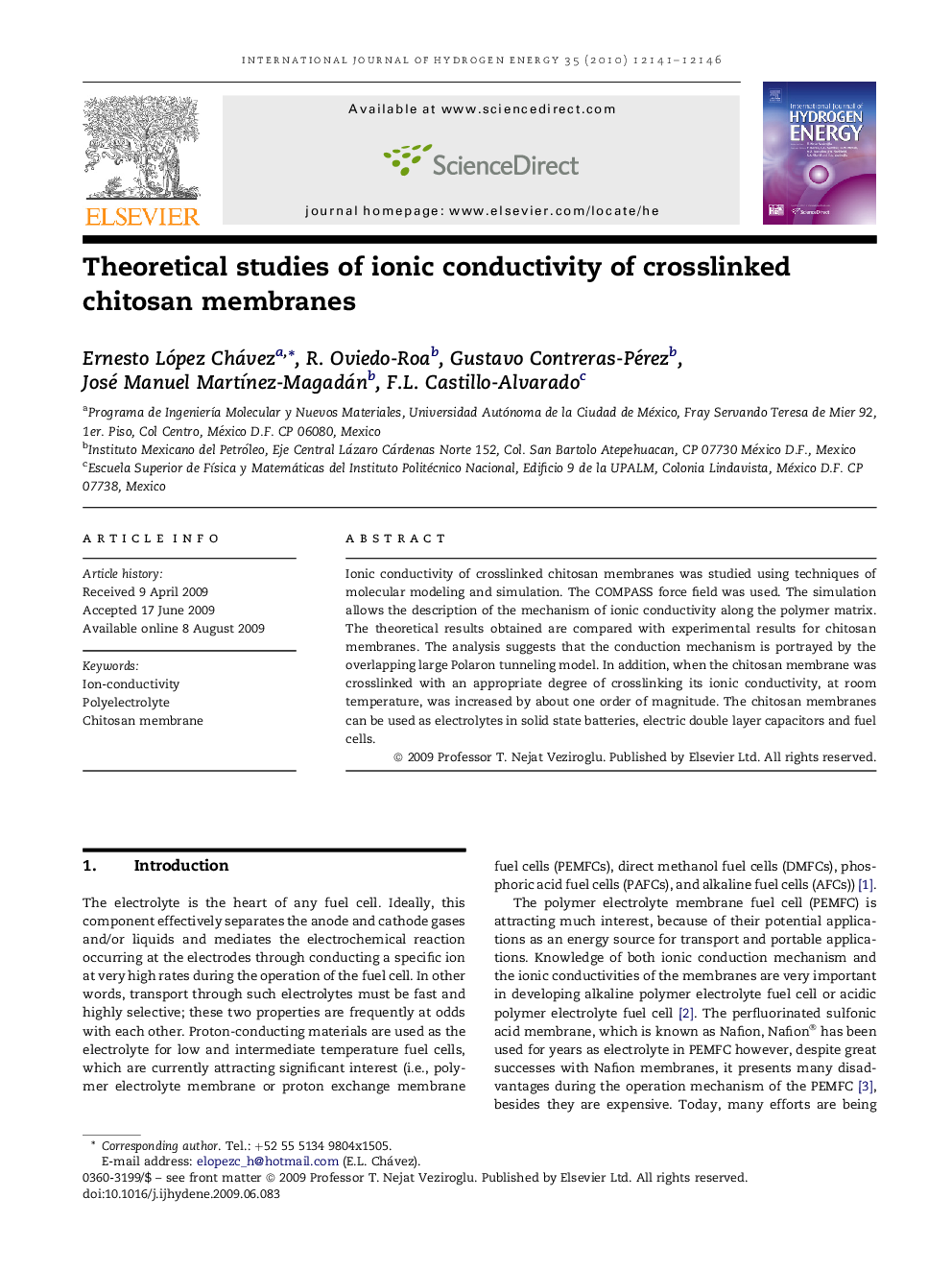| Article ID | Journal | Published Year | Pages | File Type |
|---|---|---|---|---|
| 1272586 | International Journal of Hydrogen Energy | 2010 | 6 Pages |
Ionic conductivity of crosslinked chitosan membranes was studied using techniques of molecular modeling and simulation. The COMPASS force field was used. The simulation allows the description of the mechanism of ionic conductivity along the polymer matrix. The theoretical results obtained are compared with experimental results for chitosan membranes. The analysis suggests that the conduction mechanism is portrayed by the overlapping large Polaron tunneling model. In addition, when the chitosan membrane was crosslinked with an appropriate degree of crosslinking its ionic conductivity, at room temperature, was increased by about one order of magnitude. The chitosan membranes can be used as electrolytes in solid state batteries, electric double layer capacitors and fuel cells.
